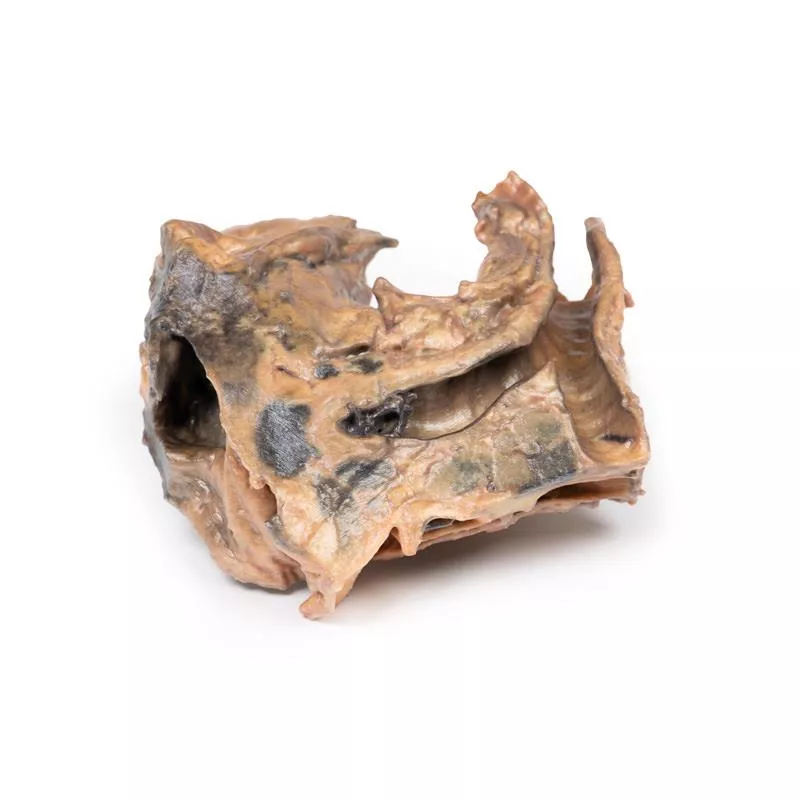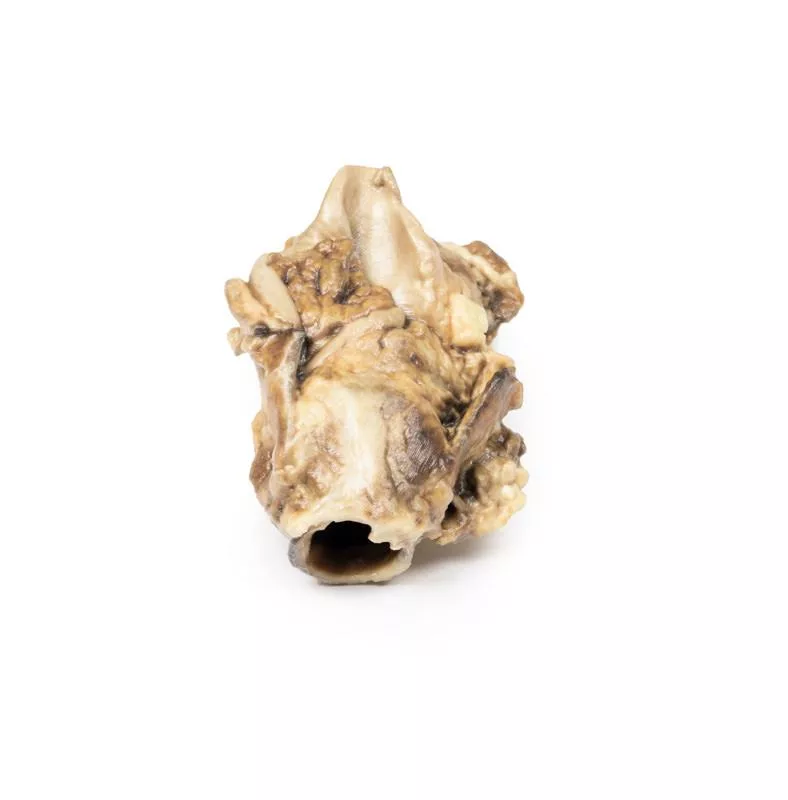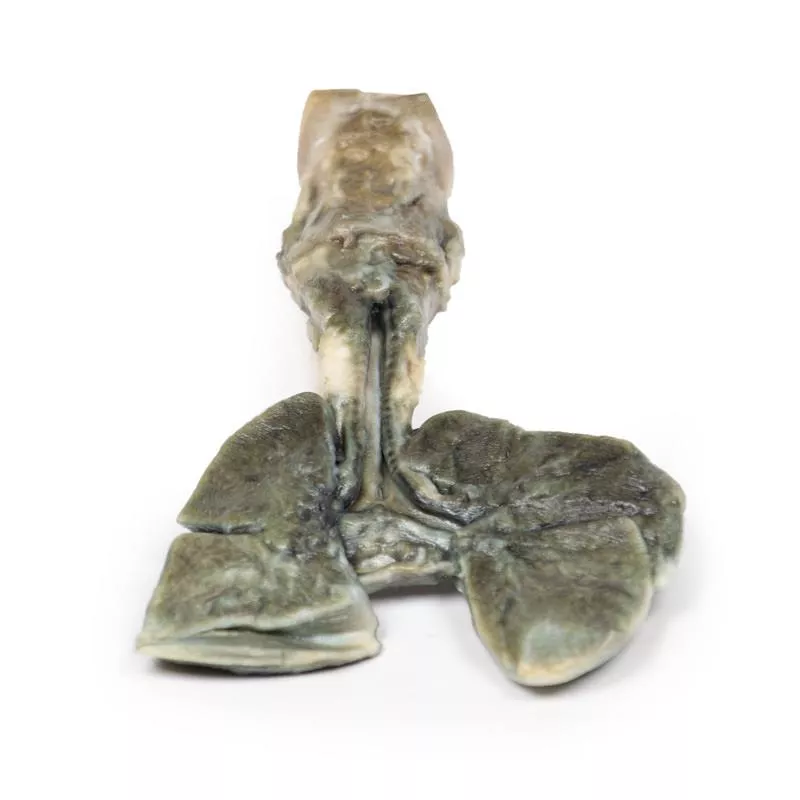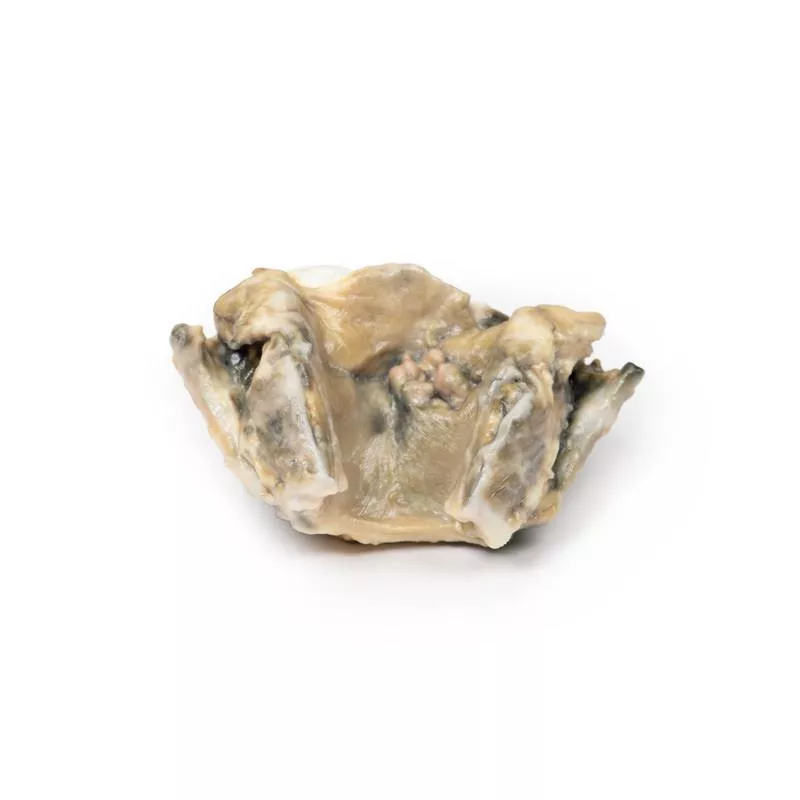Product information "Bronchopneumonia"
Clinical History
There is no clinical history available for this specimen.
Pathology
This parasagittal section of the left lung shows patchy consolidations and discolouration, especially in the upper lobe, where the pleural surface appears notably affected. The consolidations are centred around ectatic bronchioles, with signs of congestion and hyperaemia in both lobes.
Further Information
Bronchopneumonia is a form of pneumonia marked by inflammatory exudate within the alveolar spaces, leading to focal consolidation. These areas show red hepatization caused by vascular congestion, infiltration of neutrophils, red blood cells, and fibrin. The resulting consolidation gives the lung a solid appearance.
It involves acute inflammation of the bronchi with affected peribronchial and peribronchiolar lobules. Though traditionally distinguished from lobar pneumonia, patterns often overlap in clinical practice. Bronchopneumonia may progress into lobar pneumonia and is usually caused by bacterial infection. It is more often a hospital-acquired than a community-acquired pneumonia.
There is no clinical history available for this specimen.
Pathology
This parasagittal section of the left lung shows patchy consolidations and discolouration, especially in the upper lobe, where the pleural surface appears notably affected. The consolidations are centred around ectatic bronchioles, with signs of congestion and hyperaemia in both lobes.
Further Information
Bronchopneumonia is a form of pneumonia marked by inflammatory exudate within the alveolar spaces, leading to focal consolidation. These areas show red hepatization caused by vascular congestion, infiltration of neutrophils, red blood cells, and fibrin. The resulting consolidation gives the lung a solid appearance.
It involves acute inflammation of the bronchi with affected peribronchial and peribronchiolar lobules. Though traditionally distinguished from lobar pneumonia, patterns often overlap in clinical practice. Bronchopneumonia may progress into lobar pneumonia and is usually caused by bacterial infection. It is more often a hospital-acquired than a community-acquired pneumonia.
🔬 3D Anatomy Series - Human Body Replicas to Enhance Teaching!
August 26, 2025
Discover exclusive 3D-printed models of the human body – created directly from radiological data or real specimens.
Erler-Zimmer
Erler-Zimmer GmbH & Co.KG
Hauptstrasse 27
77886 Lauf
Germany
info@erler-zimmer.de
Achtung! Medizinisches Ausbildungsmaterial, kein Spielzeug. Nicht geeignet für Personen unter 14 Jahren.
Attention! Medical training material, not a toy. Not suitable for persons under 14 years of age.






































